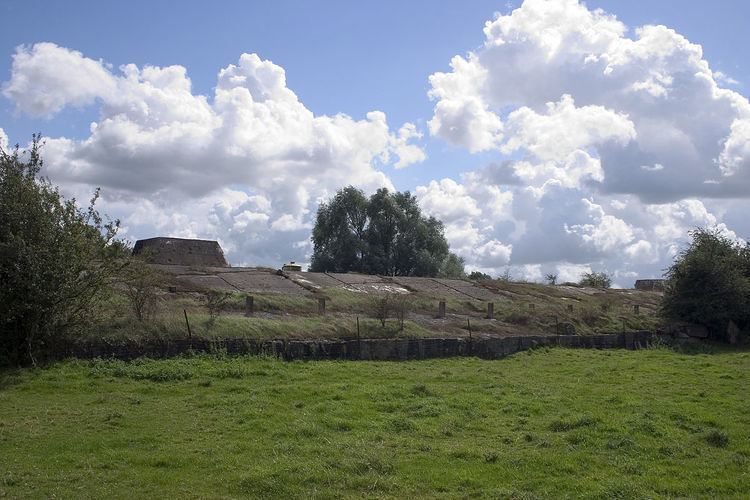Owner Privately owned Condition Ruined | Height 10 metres (33 ft) Open tothe public No Built 1943 | |
 | ||
The Siracourt V-1 bunker is a Second World War bunker built in 1943-44 by the forces of Nazi Germany at Siracourt, a commune in the Pas-de-Calais department in the Nord-Pas-de-Calais region of France. Codenamed Wasserwerk St. Pol (Waterworks St. Pol), it was intended for use as a bomb-proof storage facility and launch site for V-1 flying bombs. However it never went into operation due to intensive Allied bombing that made it the most heavily attacked of all the German V-weapon sites.
Contents
Background
With the Allies gaining air superiority by 1943, different sections of the Luftwaffe – which had responsibility for the V-1 – debated how best the weapons could be deployed in the face of an increased threat of aerial bombardment. The Luftwaffe's Flak division favoured dispersing V-1s to a large number of small camouflaged launch sites. However, General Erhard Milch, who was in charge of the Luftwaffe's production programme, advocated large launch bunkers. Adolf Hitler was known to be in favour of such an approach, which had already led to the construction of a massive bunker at Watten for launching V-2 missiles. In July 1943, Luftwaffe chief Hermann Göring brokered a compromise under which both alternatives would be pursued; four (and ultimately ten) heavy launch bunkers would be built along with 96 light installations.
The heavy bunkers were all intended to be built to a standard design, codenamed Wasserwerk (waterworks) to conceal their true purpose. The first two would be built in the Pas-de-Calais at Desvres near Lottinghen and Siracourt near Saint-Pol-sur-Ternoise. The two sites are about 177 kilometres (110 mi) and 210 kilometres (130 mi) from London respectively. Two more would be built on the Cotentin Peninsula near Cherbourg. It was intended that all four would be operational by December 1943, with further bunkers to be built subsequently.
Design and construction
The Siracourt bunker is about 215 metres (705 ft) long, 36 metres (118 ft) wide and 10 metres (33 ft) high, built using some 55,000 m³ of steel-reinforced concrete. Its design and method of construction took into account the lessons learned from the destruction in August 1943 of the Watten bunker while it was still under construction. It was constructed on high ground about a kilometer (three-quarters of a mile) north of the Hesdin-Saint Pol road, to the north of the original site of the village of Siracourt. The bunker was built in loamy soil some 7.5 metres (25 ft) deep, resting on a layer of chalk bedrock. The German engineers adopted a new method which they called Verbunkerung, which involved first building the roof flat on the ground then excavating beneath it – sheltered from bombs – to create the rest of the facility.
The bunker would have been linked with the main railway line from Saint Pol to Abbeville, enabling trains carrying V-1s and supplies to enter the body of the structure. It was, in effect, a fortified railway tunnel with a storage area capable of housing 150 missiles and an aperture from which they would have been launched. Although Allied reconstructions imagined a single launch ramp, it is possible that the Germans intended to install two parallel ramps to increase the rate at which V-1s could be fired.
Discovery and destruction
The Allies spotted the construction of the Siracourt bunker almost as soon as it began in September 1943, when two parallel trenches were dug and concreted to form the walls of the structure. Heavy Allied bombing hindered construction but it continued until the end of June 1944, when the site was wrecked by Tallboy bombs dropped by the Royal Air Force. By this time about 90 per cent of the concrete had been completed, apart from the end sections, but the supposedly bomb-proof structure proved unable to withstand the six-ton Tallboy. One bomb fully penetrated the roof and exploded underneath, while another caused substantial damage when it exploded next to one of the walls. The ground around the site was churned up by over 5,000 tons of bombs. By the time the site was abandoned in April 1944, the exterior had practically been completed but the excavation of the interior had only just begun.
The Siracourt bunker is still extant today and is visible from the road. It is located on private land.
